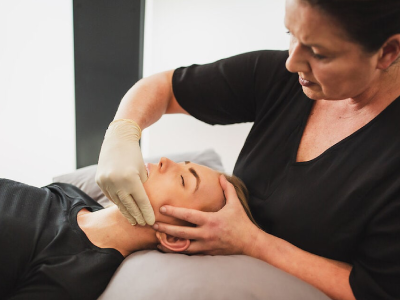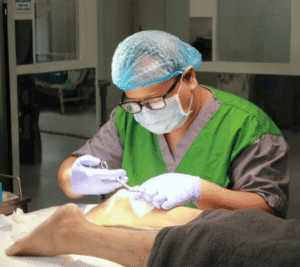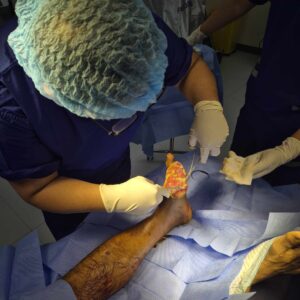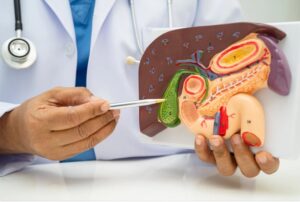Temporomandibular Joint (TMJ) Syndrome is a condition that affects the jaw joint and surrounding muscles. It’s a common issue that can cause discomfort, difficulty in jaw movement, and persistent pain. Many people may not realize that their symptoms are connected to this joint, which plays a crucial role in chewing, speaking, and facial expressions. Understanding TMJ Syndrome Treatment is key to managing the condition effectively and preventing it from interfering with daily life.
What Is TMJ Syndrome?
TMJ Syndrome refers to disorders involving the temporomandibular joint, which connects the jawbone to the skull. These disorders, collectively known as Temporomandibular Disorders (TMD), can result from a variety of causes. This joint is one of the most complex in the body, enabling movements like opening, closing, and side-to-side motion of the jaw.
TMD can develop when there is dysfunction in this joint or the muscles surrounding it. TMJ Syndrome Treatment varies depending on the underlying cause, but early recognition and intervention can often prevent more severe symptoms.
Common Causes of TMJ Syndrome
Identifying what triggers TMJ disorders is crucial in choosing the right treatment. Several factors may contribute to the condition:
- Genetics: Some individuals may be more prone to joint disorders due to inherited traits.
- Arthritis: Inflammatory conditions such as osteoarthritis or rheumatoid arthritis can affect the jaw joint.
- Jaw Injury: Trauma to the jaw or head can misalign the joint or damage muscles.
- Bruxism (teeth grinding/clenching): Often stress-induced, this can put excessive pressure on the joint.
- Misaligned bite or poor teeth alignment: Uneven bite patterns can lead to muscle strain and joint dysfunction.
- Poor posture: Neck and upper back misalignment may contribute to jaw tension.
Signs and Symptoms of TMJ Disorders
TMJ Syndrome can present a wide range of symptoms, which can be temporary or persist for years. The most common symptom is jaw pain, but others include:
- Clicking or popping sounds when opening or closing the mouth
- Limited jaw movement or difficulty opening the mouth fully
- Lockjaw, a condition where the jaw temporarily gets stuck in a position
- Pain in the face, neck, or shoulders
- Earaches or ringing in the ears (tinnitus)
- Frequent headaches
- Difficulty chewing or discomfort while speaking
Due to the overlap of symptoms, TMJ Syndrome is often confused with other medical conditions like Trigeminal Neuralgia, salivary gland diseases, or swollen lymph nodes. Proper diagnosis is essential.
Diagnosing TMJ Syndrome
There is no singular test to definitively diagnose TMJ Syndrome. A comprehensive evaluation is usually necessary. Doctors often begin with a physical examination to check jaw movement and listen for any abnormal sounds.
Depending on your symptoms, you may be referred to a dentist with TMJ experience or an ear, nose, and throat (ENT) specialist. They will attempt to rule out other conditions with similar symptoms.
Imaging tests such as X-rays, CT scans, or MRI may be recommended to get a better look at the joint structure and surrounding tissues. Understanding the root cause allows for a more precise TMJ Syndrome Treatment plan.
Conservative and Nonsurgical TMJ Treatments
In most cases, TMJ symptoms can be managed through conservative, nonsurgical methods. These approaches aim to reduce pain and restore jaw function without invasive procedures. Common nonsurgical treatments include:
Self-Care Practices
- Cold or warm compresses: Applying heat or cold to the jaw helps reduce inflammation and relax the muscles.
- Soft diet: Eating soft foods can reduce strain on the jaw.
- Jaw rest: Avoiding excessive jaw movements like chewing gum or yawning widely.
Medications
- Over-the-counter pain relievers: Ibuprofen or acetaminophen can help reduce pain and swelling.
- Muscle relaxants: These may be prescribed to relieve muscle tension.
- Anti-inflammatory medications: Used to manage inflammation in the joint.
Physical Therapy
A physical therapist can guide you through exercises to strengthen the jaw muscles, improve range of motion, and promote relaxation.
Stress Management
Stress is a common trigger for jaw clenching and teeth grinding. Techniques such as mindfulness, meditation, and cognitive behavioral therapy can reduce tension and improve overall wellness.
When to Consider Advanced TMJ Syndrome Treatment
If conservative methods are not effective, more advanced interventions may be necessary. These include:
Oral Splints or Mouth Guards
Custom-fitted devices worn over the teeth help prevent clenching and grinding, realign the jaw, and reduce strain.
Injections
- Corticosteroid injections can reduce inflammation and provide temporary relief.
- Botox injections may help relax overactive jaw muscles in certain cases.
Arthrocentesis
A minimally invasive procedure that involves flushing out the joint with fluid to remove debris and reduce inflammation.
Surgery
Surgical treatment is considered a last resort when other options have failed. Procedures may involve joint repair or replacement but are rarely needed.
Lifestyle and Prevention Tips for TMJ Syndrome
Preventing TMJ disorders or managing existing symptoms often involves lifestyle adjustments. Some helpful practices include:
- Maintaining proper posture: Especially during computer use or long periods of sitting
- Avoiding hard or chewy foods: Such as nuts, raw vegetables, or chewing gum
- Performing jaw exercises: As recommended by a healthcare provider
- Limiting stress: Through relaxation techniques and regular exercise
- Scheduling regular dental checkups: To monitor bite alignment and detect early signs of TMD
Takeaway
TMJ Syndrome Treatment can vary significantly depending on the underlying cause and severity of symptoms. Early intervention, conservative care, and simple lifestyle changes are often enough to manage the condition effectively. If pain persists or worsens, consulting a specialist is important to avoid complications and improve quality of life. Taking a proactive approach to TMJ health can prevent long-term discomfort and restore full jaw function.






